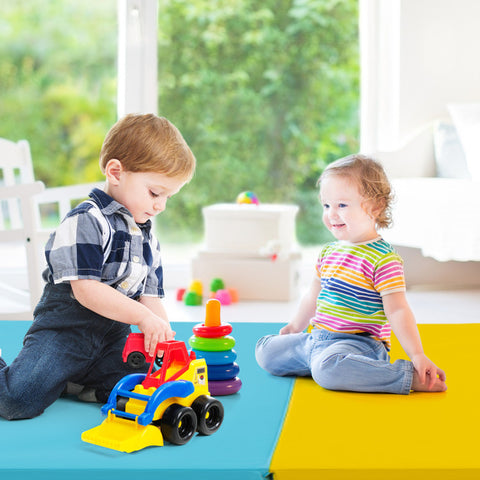News
How Often Should You Replace a Gymnastics Mat? Signs to Watch and Maintenance Tips
Whether you're using it at home, in a school gym, or in a professional training facility, knowing how often you should replace a gymnastics mat is crucial for safety and performance. A worn-out mat can lead to reduced shock absorption, slipping risks, and possible injuries. In this article, we’ll explore the key signs your gymnastics mat needs replacing, how long mats typically last, and how to extend their life with simple care.

Why It’s Important to Replace a Gymnastics Mat on Time
Gymnastics mats are designed to cushion impact and provide a stable, safe surface for movement. Over time, even the best-quality mats lose their effectiveness. Whether you use foldable mats, inflatable air tracks, or panel mats, all undergo wear from repetitive landings, moisture exposure, and regular cleaning. Delaying replacement not only affects performance but increases the chance of joint injuries or falls due to reduced grip or padding.
Average Lifespan of a Gymnastics Mat
On average, gymnastics mats last 3 to 7 years, depending on how frequently they’re used and the environment they're kept in. Mats in high-traffic gyms may need replacement sooner than those used occasionally at home.
Key Signs Your Gymnastics Mat Needs Replacing
1. Compressed or Uneven Foam
When the mat starts feeling “flat” in the middle or fails to provide bounce, it means the foam core is breaking down. This is a major indicator that the mat is no longer absorbing shock properly.
2. Visible Tears or Cracks in the Surface
Cuts, peeling vinyl, or deep cracks can allow moisture or bacteria to get inside. A damaged surface can also become a tripping hazard, especially during floor routines or stretching exercises.
3. Slipping or Poor Grip
If your mat starts sliding on the floor or you feel your feet slipping during a landing, the anti-slip surface may be worn out. This affects stability and can increase injury risk.
4. Musty Smell or Mold Spots
Even with regular cleaning, older mats may develop mold or mildew from trapped sweat or humidity. A persistent odor is a warning sign.
5. Loss of Shape or Warping
If the mat no longer lays flat or edges curl up, it can be a safety concern. This is especially common in foldable mats or mats stored improperly.
Factors That Affect How Often You Should Replace a Gymnastics Mat
- Frequency of Use: Daily use in gyms leads to faster wear.
- Mat Type: Inflatable air tracks may deflate or develop punctures sooner than solid-core mats.
- Storage Conditions: Mats kept in humid or poorly ventilated areas degrade faster.
- Cleaning Routine: Overuse of harsh chemicals can wear down the outer material faster.
Tips to Extend the Life of Your Gymnastics Mat
- Always clean your mat with mild soap and water—avoid bleach or alcohol-based cleaners.
- Store in a dry, flat space away from direct sunlight or extreme temperatures.
- Roll or fold mats gently to avoid creases that can lead to material cracking.
- Use the mat only on appropriate surfaces—avoid rough concrete or gravel floors.
- Inspect mats every few months for foam consistency, surface condition, and grip.
When in Doubt, Replace It
If you're unsure whether your mat is still safe, it's better to err on the side of caution. For home use, a mat used by children or beginners should be replaced sooner if you notice any damage. For professional training or competitive use, mats should meet ASTM standards for thickness, material, and safety features.
Final Thoughts: How Often Should You Replace a Gymnastics Mat?
To keep your training space safe and effective, it’s essential to monitor the condition of your gymnastics mat regularly. Knowing how often you should replace a gymnastics mat and recognizing the signs of wear—like foam breakdown, slipping, or damage—can prevent injuries and ensure better practice sessions. A little maintenance goes a long way, but when the time comes, don’t hesitate to invest in a replacement that supports your performance and safety.

